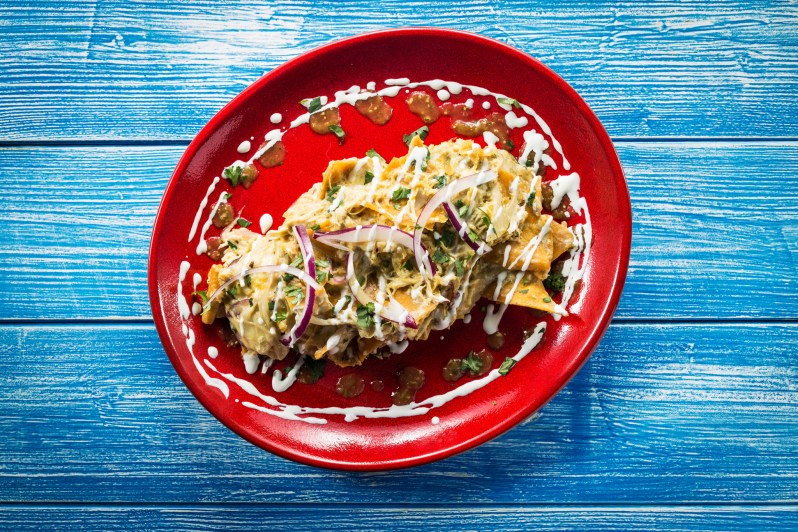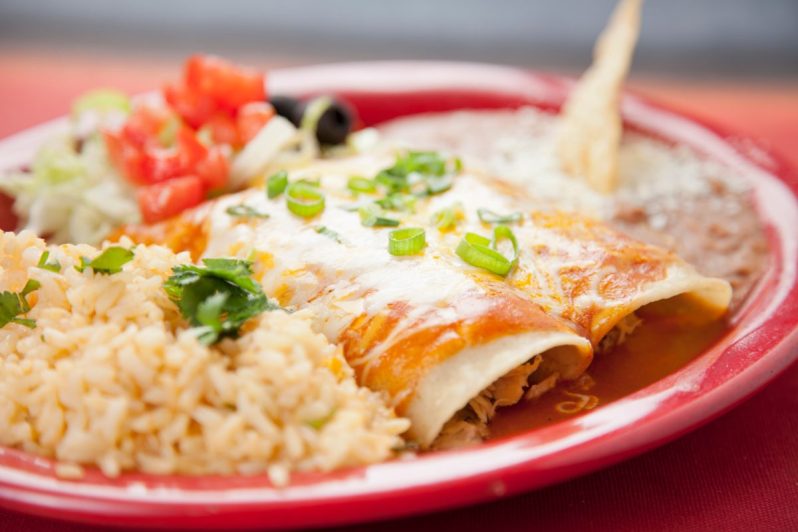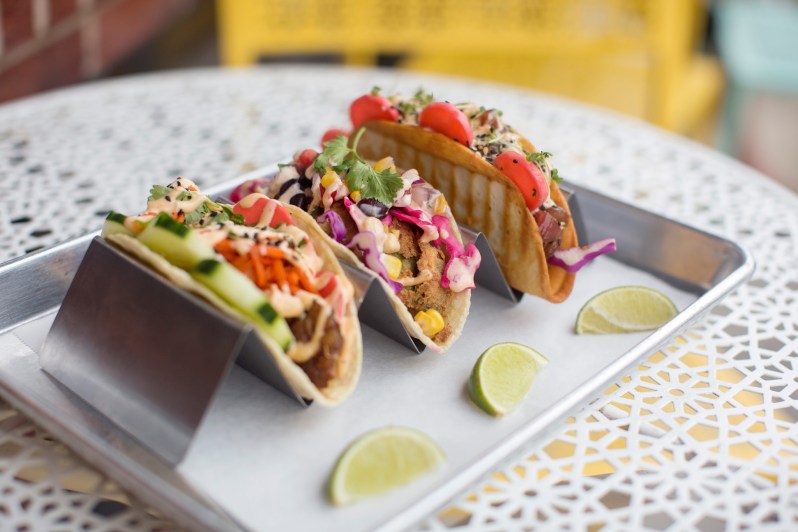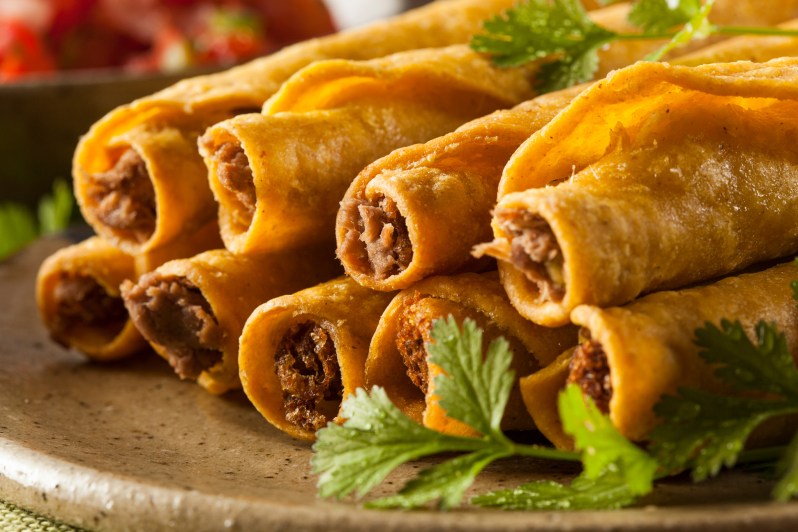Regional Mexican cuisines play a major role in upscale dining environments these days; Prestigious restaurants like Pujol in Mexico City, Cosme in New York City, Topolobampo in Chicago, and Broken Spanish in Los Angeles give traditional ingredients and preparations a contemporary fine-dining twist, showcasing the complex spice blends, bright citrus notes, and flavorful proteins so closely identified with Mexican cooking.

But for many Americans, their colloquial use of “Mexican food” doesn’t necessarily involve super-authentic (or high-end) dishes or ingredients. At fast-casual eateries, nationwide chains like Chili’s, and even at fast-food spots like Taco Bell, the food on offer more closely resembles the unique blend of Mexican flavors and American ingredients and techniques popularly known as “Tex-Mex.”
Nowadays, fusion cuisines boast massive popularity among fine-dining chefs and restauranteurs … and yet, Tex-Mex often finds itself relegated to a lower foodie tier, with outdated stereotypes and assumptions overshadowing the ingenuity and the general deliciousness of this regional culinary style. As major Tex-Mex fans ourselves, we decided to ask chefs who work within this cuisine to tell us what they love about it, why they believe that it’s been undervalued for so long, and why it’s worthy of serious food-world consideration and acclaim.
What defines Tex-Mex?
According to Serious Eats, Tex-Mex cuisine “ is rooted in the state’s Tejano culture (Texans of Spanish or Mexican heritage who lived in Texas before it became a republic) and also Mexican immigrants who hailed largely from Northern Mexico.” This heritage gets the credit for the popularity of smoky cumin in Tex-Mex cooking: Executive chef Iliana de la Vega of El Naranjo in Austin told Serious Eats that “we use [cumin] a lot in the north, but it’s not a spice we use much in the southern part of Mexico,” says de la Vega.

As far as Tex-Mex’s other historically popular elements go, items like ground beef, sour cream, and processed cheese like Velveeta derive from mid-century American tastes. Northern Mexican influences with an Americana-based twist yielded Tex-Mex staples like cheese enchiladas, fajita platters, and Texan queso, which can still be found in every nook and cranny of the Lone Star State and in restaurants all over the country.
For the people of Texas, Tex-Mex cuisine is a “way of life.”
“For me, growing up in Dallas, Tex-Mex was a way of life,” Jesse Houston, a Texas native and the executive chef of Tex-Mex restaurant Sophomore Spanish Club in Jackson, Mississippi, tells us. “It was on every corner in many different forms: fast food, mom and pop, chain restaurant, upscale, Mexican street vendors & taquerias, Southwestern, and so on and so forth. Each style has its own special link in the chain, helping to broaden and define — [in] some good [ways] and some bad — a cuisine with a long history and rich story. You can’t even have true Texas foodways without including Tex-Mex.”
Chef Lenny Lancarte of Joe T. Garcia’s in Fort Worth, Texas agrees, adding that “Tex-Mex got a black eye for many years, being labeled the bastardized version of Mexican cuisine, Begrudgingly, [I admit that] I sat firmly in that camp while trying to earn my culinary stripes. [The United States] is a young country and doesn’t have the hyper-regionalized cuisines of some Old World countries, but Tex-Mex is one of the very few we have in our country, and I’m proud to say that my great-grandmother was a pioneer of the cuisine almost 100 years ago. I think the time is here [for Tex-Mex to get its due]; people are wearing it on their sleeves and taking pride in the cuisine that we as Texans (or Texicans) possess. In fact, I am diving back into the cuisine with a new Tex-Mex concept in 2020, right here in Fort Worth.”
Stereotypical views of Tex-Mex don’t reflect the reality of this food genre.
The biggest factor hindering Tex-Mex’s acceptance in the fine-dining pantheon involves unfair preconceptions of this cuisine’s nature. Because Tex-Mex does include both Mexican and traditionally American ingredients and sometimes incorporates “convenience” foods like jarred salsas, canned beans, and pre-shredded cheese, some diners equate it with greasy, overstuffed plates that offer little in the way of flavor nuance and sophistication.
Of course, these assumptions reflect a very limited view of this remarkably varied culinary style, and today’s chefs see plenty of opportunities for Tex-Mex to become more and more elevated. Jason Barrett, CEO of the Rio Grande Restaurants chain in Colorado, provides a thorough explanation as follows:
“‘Fusion food’ is making such a resurgence right now, from sushi burritos to Asian tacos and so on. Loro – a collaboration between Franklin Barbecue and Uchi – is one of the most buzzed-about restaurants in Austin right now, [and its menu is a clear example of fusion cuisine].

And Tex-Mex is one of the original fusion foods of the Southwest.
Over the last 10 years, Tex-Mex cuisine has moved past the stereotypes that held the cuisine back on a large scale for so long. Diners always assumed that Tex-Mex fare was only served at ‘greasy spoons’ and was just ‘cheap eats.’ Just because Tex-Mex has humble roots — fajitas were born from farmers using very cheap cuts of meat — doesn’t mean that it’s not worthy of respect. Simple food doesn’t equate to ‘cheap and dirty.’ It’s delicious food that isn’t pretentious. Millennials are seeking truth and authenticity, and Tex-Mex is just that.”
“Mexican” ingredients and “American” ingredients hold equal importance in this unique pastiche cuisine.
As Barrett mentions, Tex-Mex’s fusion characteristics set it apart from other food categories; it’s truly an equitable mix of its “parent” cuisines, and both Mexican (especially Northern Mexican) and American (specifically, those identified with Texas) flavors and ingredients are essential to Tex-Mex dishes. “We should be really proud of [Tex-Mex cuisine], and we should be recognized,” insists corporate executive chef Alex Padilla of Legacy Restaurants in Houston. “We find the best blend between Texas and Mexico, and putting those two flavor [categories] together … you can’t beat that. And I think [that Tex-Mex is about] more than just food. It’s culture. It’s so Texas; it’s so us. We use brisket in Mexican food. We use BBQ sauce. Mexican-Americans are making these dishes, and chefs and cooks learn a lot from each other to perfect the cuisine.”
Tex-Mex dishes can be indulgent comfort foods or light and clean plates — the flavors work equally well on both sides.
One tricky aspect of Tex-Mex cuisine involves its close association with fried foods and calorie-rich ingredients like cheese and sour cream; as fresh, “light” menus rise in popularity, items like stuffed burritos, crispy taquitos, and fully loaded enchiladas become harder to advocate for in an argument in favor of Tex-Mex “fine dining.” However, chef Julian Rodarte of Beto & Son in Dallas, Texas wants diners to know that the Tex-Mex genre covers far more than its comfort-food-related “greatest hits”:

“Tex-Mex food is distinct; cooking on mesquite wood gives the food its sharp, smoky flavor. Cuts of meat are also unique, in that brisket and other higher-quality meats are [often] passed over for the cheaper but delicious cuts like skirt steak or flank steak. Lastly, the flour tortilla is a good symbol of Tex-Mex cuisine. Mexico primarily uses corn tortillas, but as you get closer to the U.S. border, towns are more likely to use flour. Mexicans were making tortillas out of corn, and Americans were making bread out of flour, so Tex-Mex cuisine naturally developed tortillas from flour. Sometimes, Tex-Mex cuisine gets flack for being perceived as heavy. But just as not all Southern cuisine has to be covered in gravy, not all Tex-Mex has to covered in queso or chile con carne. Leaner meats are used in dishes like fajitas, and a wealth of vegetables are regularly incorporated, like squash, zucchini, portobello mushrooms, and bell peppers.”



